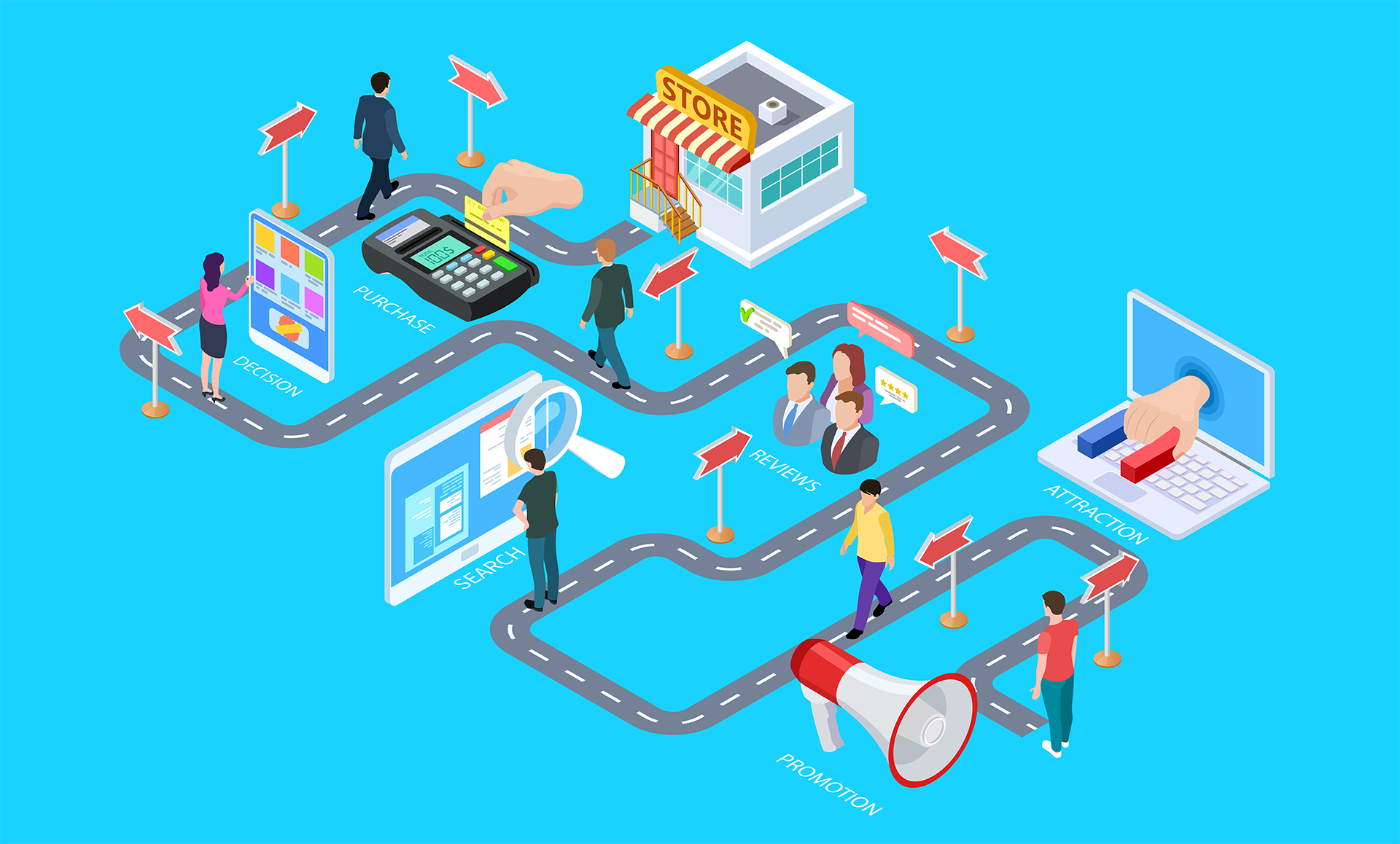“If you don’t know where you’re going, how can you know if you’ve arrived?”
That’s the kind of infuriating quote that a half-baked life coach or boss might spit out during a badly lit webinar on a Wednesday morning. You may find yourself rolling your eyes at the platitude, but there is a real nugget of truth to it.
In business, the customer journey map will show you where your customers are going, and it will help you to know when they arrive.
Whether the customer journey map is sketched out on paper or a spreadsheet on your mobile, you need to have one to plot a path through your website that leads customers where you want them to go. Every step on the journey should be pleasant and effective and provoke an action from your visitor that leads them to the destination.
Sound easy? It’s not. But a map is a great guide.
Before we begin the map, do you know the story that your website is trying to tell?
What Is Customer Journey Mapping?
When you build a customer journey map, you are trying to visualize a customer’s experience engaging with your brand from start to finish.
Your goal is to figure out where they first hear about your brand, where that initial contact takes them, then how to prompt the next step — and the one after that — until the designated endpoint is reached. That may be a purchase or a recommendation to someone else.
In addition, customer journey mapping provides valuable insights into who your customers are and what they want, while also offering you a great understanding of your website, how people are using it and how effective your online assets really are.
After all, once your customer journey map shows you what is really happening, then you can set about shaping it and fixing the areas where it’s not working. When done well, it’s a tool for great empathy that can put you in the shoes of your customer like nothing else.
A website journey map is never really finished. Your website should be a living, breathing thing that keeps adapting to changes in customer behavior, in line with the insights you’re getting from your CMS.
How Do You Map Your Website’s Customer Journey?
Start by creating archetypes of your typical customers who are on the journey. Give them names and ages — backstories that paint a picture of who they are. When you have a persona that you know matches your consumer, then you have a powerful tool to predict customer behavior and meet customer expectations.
Next, try to map out all of the touchpoints where your customer interacts with your brand. Touchpoints will include assets such as billboards, social media posts, pages of your website, banner ads, YouTube videos or Google Search results. Each of these touchpoints is an opportunity to influence what actions the visitor takes next. This is where you use what you have learned about them to influence their behavior.
Finally, you need to have a very clear idea of what your end goal is. Where is your customer going, and what are they going to do when they get there?
How To Use the Map To Guide Your Website Design
Let’s plot out your journey in a series of steps along the way for the ideal customer journey.
Write down the first point of contact with your brand. Will it be via social media, a blog or a billboard? Where do you want that to lead? It’s unlikely to lead straight to a sale, so take it slowly — perhaps a demo next, or a webinar or e-book to find out more about your product.
If that phase goes well, then you probably want the customer journey to move on to your actual products and services and what you can offer. What web page do you want them to see next? Is it online only, or in-person too? What’s the first element they’ll click on? Where does it go next? And on you go, mapping out the pathway to success.
Along with the archetypal customers you have created, these steps you lay out are a vital part of the customer journey map.
Now for each of the target personas that you have created for the website, open a separate spreadsheet.
Name the columns on the spreadsheet, starting with the Current Customer State. Then label each of the steps along the customer journey that lead to whatever your business goal is with the customer.
When it comes to naming rows to go with your spreadsheet columns, try to list all the important data you want to receive about that client at that step of the journey. For example, you may want to know their motivations at that stage, next options, their frustrations, your touchpoints — anything you think is relevant to the journey. You can also draw this out visually in a flow chart or similar form.
Let the Map Guide You
The customer journey map should have a central place in your marketing strategy, and all the content you put out should address the various touchpoints on the journey. Your design should include strategic calls to action that move people through the process of using your products and services.
While it may seem a bit forced and unnecessary at times, remember that the customer journey map is not something that your users need to see. It’s not really meant for them. As long as you understand the customer journey and the map to your destination, then you can relax knowing that the marketing material you put out is in line with your ultimate goals.
Ready to get started? Orpheus is available and waiting to help guide you in your customer journey mapping. Reach out to one of our guides and we’ll set you on the right path straight away.








